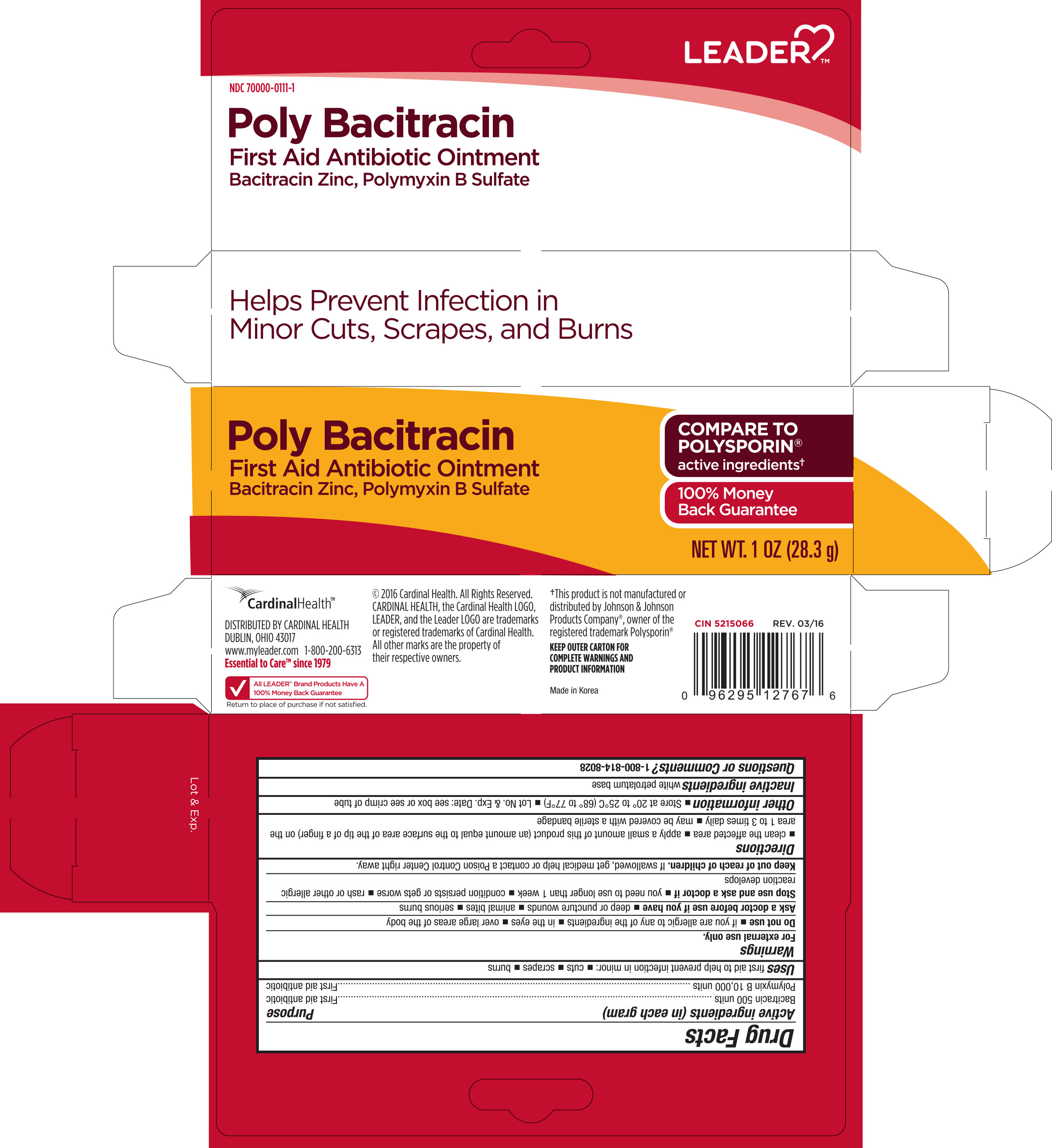Leader First Aid Antibiotic | Bacitracin Zinc, And Polymyxin B Sulfate Ointment while Breastfeeding

What is Leader First Aid Antibiotic | Bacitracin Zinc, And Polymyxin B Sulfate Ointment ?
Brief: Uses first aid to help prevent infection in minor: cuts scrapes burns
Can I use Leader First Aid Antibiotic | Bacitracin Zinc, And Polymyxin B Sulfate Ointment while breastfeeding?

Leader First Aid Antibiotic | Bacitracin Zinc, And Polymyxin B Sulfate Ointment Breastfeeding Analsys
Bacitracin while Breastfeeding
SafePolypeptide with anti-microbial activity that is produced by strains of Bacillus licheniformis or Bacillus subtilis. Indicated for topical use (high nephrotoxicity with systemic use) Not absorbed through skin, mucosa or intestinal tract. When orally taken it is destroyed by the gut with no pass into the blood stream. Preferably, avoid it on the breast or clear it out before nursing. Avoid use of creams, gels and other topical medication containing paraffin (petroleum-derived mineral oil) in order to avoid the risk of absorption by the child. The WHO Model List of Essential Medicines 2002 rates it as compatible with breastfeeding.
Polymyxin b while Breastfeeding
SafeCAS Number: 1405-20-5
Antibiotic drug that is usual topically used (Dermatology, ENT and Ophthalmology) At latest update no published data on excretion into breast milk were found. The small dose and low absorption to the plasma in a majority of preparations that are topically used on the eye, ear or skin make a significant excretion into the milk unlikely. Its high molecular weight makes less probable an excretion into breast milk in significant amount. Due to a poor oral bioavailability, appearance in the infant's plasma from ingested milk is regarded as nil or scanty, except in premature infants or during the immediate neonatal period who may show an increased intestinal absorption. Polymyxin E or Colistin with a very similar molecular structure is excreted into breast milk in non-significant amount. It is advisable to avoid the application of creams, gels and other products for local use that would contain paraffin (mineral oil) to prevent absorption by the infant.
Leader First Aid Antibiotic | Bacitracin Zinc, And Polymyxin B Sulfate Ointment Breastfeeding Analsys - 2
Bacitracin while Breastfeeding
CAS Number: 1405-87-4
Because it is poorly absorbed after topical application and oral ingestion, bacitracin is considered a low risk to the nursing infant.[1] Only water-miscible cream or gel products should be applied to the breast because ointments may expose the infant to high levels of mineral paraffins via licking.[2]
Polymyxin b while Breastfeeding
CAS Number: 1404-26-8
Because it is poorly absorbed after topical application, polymyxin B is considered a low risk to the nursing infant.[1] Only water-miscible cream or gel products should be applied to the breast because ointments may expose the infant to high levels of mineral paraffins via licking.[2]
I am nursing mother and I have already used Leader First Aid Antibiotic | Bacitracin Zinc, And Polymyxin B Sulfate Ointment, what should I do?
As usage of Leader First Aid Antibiotic | Bacitracin Zinc, And Polymyxin B Sulfate Ointment is mostly safe while breastfeeding hence there should not be any concern. In case of any change in behavior or health of your baby you should inform your health care provider about usage of Leader First Aid Antibiotic | Bacitracin Zinc, And Polymyxin B Sulfate Ointment else no further action is required.
My doctor has prescribed me Leader First Aid Antibiotic | Bacitracin Zinc, And Polymyxin B Sulfate Ointment, what should I do?
Definitely, Leader First Aid Antibiotic | Bacitracin Zinc, And Polymyxin B Sulfate Ointment is safe in lactation for baby. No wonder your doctor has recommended it.
If I am using Leader First Aid Antibiotic | Bacitracin Zinc, And Polymyxin B Sulfate Ointment, will my baby need extra monitoring?
No extra baby monitoring required while mother is using Leader First Aid Antibiotic | Bacitracin Zinc, And Polymyxin B Sulfate Ointment
Who can I talk to if I have questions about usage of Leader First Aid Antibiotic | Bacitracin Zinc, And Polymyxin B Sulfate Ointment in breastfeeding?
US
National Womens Health and Breastfeeding Helpline: 800-994-9662 (TDD 888-220-5446) 9 a.m. and 6 p.m. ET, Monday through Friday
UK
National Breastfeeding Helpline: 0300-100-0212 9.30am to 9.30pm, daily
Association of Breastfeeding Mothers: 0300-330-5453
La Leche League: 0345-120-2918
The Breastfeeding Network supporter line in Bengali and Sylheti: 0300-456-2421
National Childbirth Trust (NCT): 0300-330-0700
Australia
National Breastfeeding Helpline: 1800-686-268 24 hours a day, 7 days a week
Canada
Telehealth Ontario for breastfeeding: 1-866-797-0000 24 hours a day, 7 days a week
